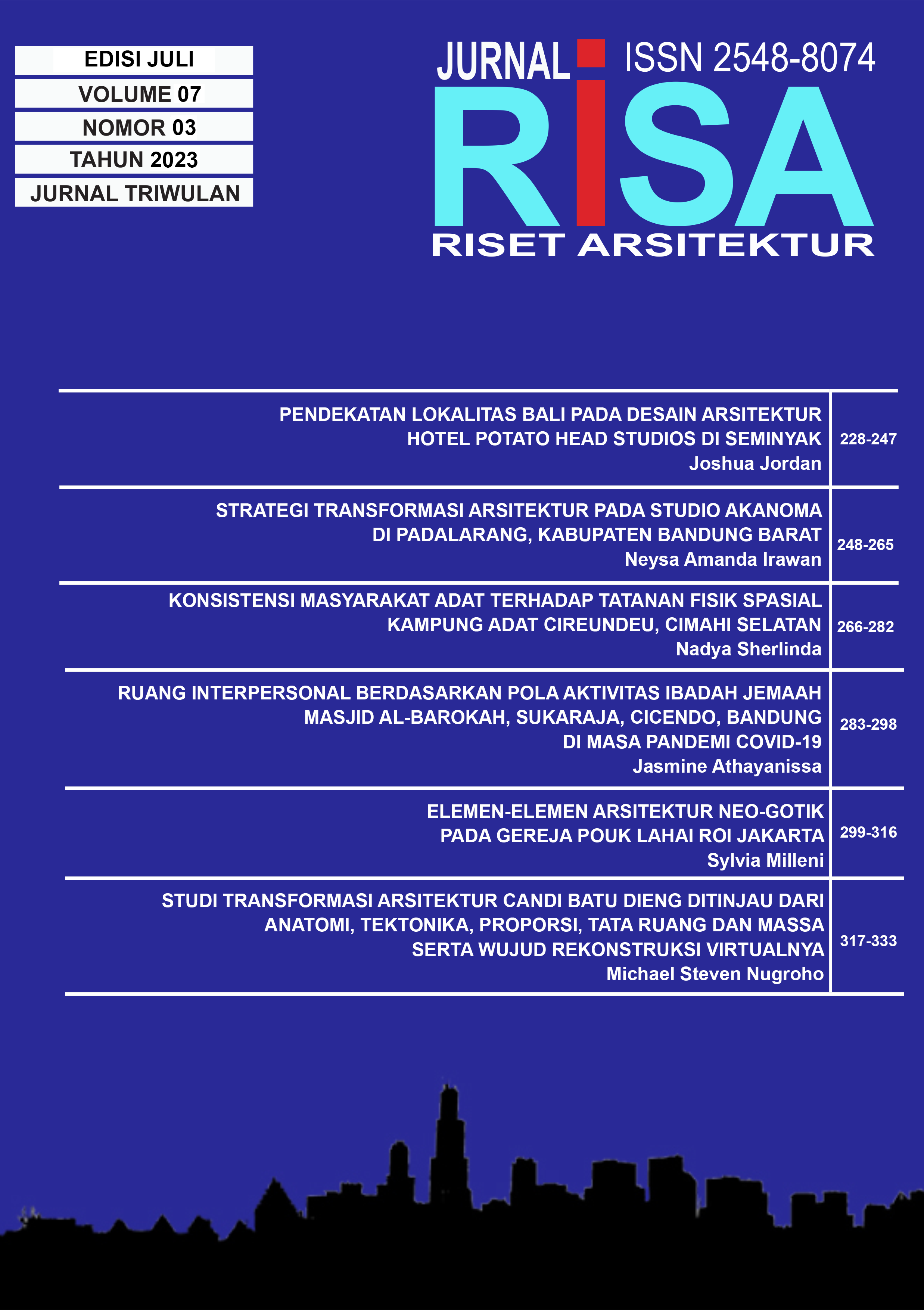ARCHITECTURAL TRANSFORMATION STRATEGY OF AKANOMA STUDIO, IN PADALARANG, BANDUNG BARAT REGENCY
DOI:
https://doi.org/10.26593/risa.v7i03.6998.248-265Abstract
Abstract – The architecture in Indonesia, like the architecture of many countries and regions in the world, has recently undergone various changes due to the phenomenon of globalization. The rapid modernization and the rapid pace of architectural development create enormous opportunities for the entry of foreign cultural values. This causes rapid changes and transformations that occur in the architecture. This condition is thought to have resulted in the transformation of traditional architecture as a relic of past architecture, both in function, spatial planning or building form.The purpose of this research is to find out how Studio Akanoma responds to this globalization phenomenon by transforming its architecture, as well as revealing the architectural transformation strategy of the Akanoma Studio building in Padalarang, West Bandung Regency. Studio Akanoma is the work of Yu Sing, which currently functions as the office of an architectural consulting bureau. The theory applied in this study refers to (1) the theory of architectural transformation, (2) the theory of architectural transformation process (3) the theory of function, space, and form in architecture, and (4) the theory of traditional Javanese culture and architecture. This research was designed using a qualitative method with a case study approach.The results of this study indicate that the architectural transformation that occurred in the Akanoma Studio building in Padalarang, West Bandung Regency shows a transformation strategy that closely interweaves elements of traditional architectural locality in the context of modern life, with the use of pragmatic and iconic transformation strategy. This can be seen in the architectural expression, both in the function, layout, and form of the building. How to maintain the existence of traditional architecture in the present and in the future is a factual and interesting problem for the development of local/traditional architectural knowledge. More broadly, this study is expected to provide an overview of the development and transformation strategy of traditional architecture which is expected to answer future architectural challenges, and can be applied in the activities of designing and building architecture as a work of the built environment.
Keywords: globalization, architectural transformation, identity, Padalarang Bandung Barat
Additional Files
Published
Issue
Section
License
Copyright (c) 2023 Neysa Amanda Irawan

This work is licensed under a Creative Commons Attribution-NonCommercial-ShareAlike 4.0 International License.












